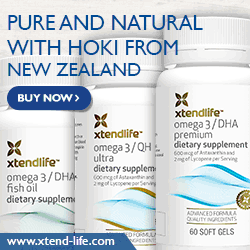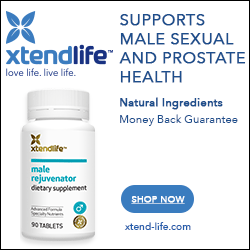Time in a Bottle
I have to rendezvous with my husband in a few hours, and have a bunch of things to do before then. I should be in the shower – not hunched over the keyboard. But it’s all Paul’s fault: he got me going on this.
What set me off was his previous post: “Mangosteen, Noni, Goji, Zrii Juice…What’s Next?” In the text, Paul linked to an expose on Goji juice, produced by the Canadian Broadcasting Corporation. The video featured an extended interview with one of the promoters of a particular (and hideously expensive) MLM product: “Dr.” Earl Mindell.
Now, I’ve known about Mindell for years, but paid little attention to him before yesterday. He’s just one face in a virtual mob of alternative health promoters, all of whom preach a secular gospel of nutrition/supplementation that’s a gemische of fact and fiction. But something he said in the video caught my ear…it was a statement to the effect that Goji would make you feel and look 20 years younger (it occurs 2:50 minutes into the video).
It was the irony of that statement that drew me in. Needless to state, the Earl Mindell I saw in the video didn’t look like a young man, nor a youthful one. According to his Wikipedia entry, he was born in January 1940…so was 66+ at the time the video was shot. He looked every year of it too: while not explicitly fat, he was comfortably “padded” and jowly, with a receding hairline and eye bags to spare.
“20 years younger” – my a**.
This got me thinking back to my first look at the “anti-aging” mindset: a book titled “Life Extension” by Durk Pearson and Sandy Shaw. As I recall from their book, Pearson and Shaw contended you didn’t need to exercise or eat right, provided you took the right supplements…which – according to interviews – they consumed by the fistful. To illustrate how well their program worked, “Life Extension” featured a series of photos of the two of them posing (somewhat discreetly) in the nude.
Needless to state, the book made them instant celebrities. There were TV and magazine interviews galore: Durk Pearson’s unremarkable physique was even featured in a Playgirl spread. This absolutely boggled my mind, since to me, they looked incredibly ordinary. It was plain to see that neither one had a particularly good body…really, the only positive thing I could say is that they weren’t fat. At the time, both were in their mid-30’s and I couldn’t see any evidence in those photos that suggested they’d discovered a fountain of youth. This was confirmed by the most recent pic I could find, taken about 9 years ago. Yet they were – and to some extent still are – lionized as “experts.”
I gotta ask: why in the world would anyone take “anti-aging” advice from people who don’t look any younger or better than your Average Joe? No offense to Pearson, Shaw or Mindell, but none of them are exactly walking billboards for their ideas or commercial products. Sorry, but this is one case where you can’t separate the message from the messenger. But people do, because the message is one that they desperately want to hear: that there’s a quick and simple “fix” for the health problems that accumulate with the years.
There isn’t. And how do I know that? Because that’s what my favorite “anti-aging” guru, Jack LaLanne, says. And unlike Mindell, Pearson or Shaw, Jack lives – and looks – the part.
At 93, LaLanne is more active than most people 1/3 his age. He and his wife, Elaine, could pass for people in their early 70’s…and a vibrant 70’s at that. How do they do it? According to a 2007 interview in the Washington Post:
“I’ve said it a million times,” he notes. “Exercise is king. Nutrition is queen. Put them together and you’ve got a kingdom.”
As he says in this video excerpt:
“Don’t you want to feel better, look better, live longer? You’ve got to earn the right to do it – you don’t sit on your backside and think of the good old days. You’ve got to do something now. Every day, you should be working out at least 15 – 20 minutes, 3 to 4 times a week, at least – or more if you have the time. And then for the food you eat, make sure it’s going to be something that’s going to do something for you. You’ve got to be selfish about life: what’s it doing for me? Is it going to help my hair, my teeth, my energy, my vitality, my elimination, my sex life? Everything depends on the food – the fuel – you put into your body.”
And what sort of food is that?
“His breakfast is at 11 a.m. He eats four to five pieces of fruit and gets protein from cooked egg whites. “Once in a while I eat a turkey sandwich on whole wheat with avocado and tomato,” he says.
He doesn’t snack between meals and uses soy milk instead of dairy products, but he isn’t a Spartan: He and Elaine eat out every night.
“Every restaurant near us now has a Jack LaLanne salad,” he says. “It’s at least 10 raw vegetables chopped, and very little lettuce.” He brings his own sesame oil salad dressing and sometimes adds more hard-boiled egg whites for additional protein. He also eats fish, especially salmon, which is rich in healthy omega-3 fatty acids.
And, of course, there’s a little wine, a tribute to his Franco-American heritage. “Ever see a Frenchman who doesn’t drink?” he asks. He sips a glass that’s a mix of white zinfandel and red wine — because, as he says, “one’s too sweet and one’s too sour.”
What??? No handfuls of pills or “superfoods?” No miracles from the Himalayas/Amazon Rainforest/Ancient China/Ayurvedic Medicine?
Nope: it comes down to lifting weights, eating veggies, fruits and lean protein, and enjoying a glass of vin ordinaire. And you know what? For all the apparent “science” behind miracle pills and foods, these are precisely the lifestyle factors that science keeps identifying that can decrease your risk of degenerative, age-associated conditions like sarcopenia (muscle wasting), osteoporosis and Alzheimer’s disease; as well as your risk of premature death from cardiovascular disease and/or cancer.
This is not to damn either supplements or “superfoods” – it’s entirely possible that nutraceuticals could extend the benefits of diet and exercise even further. But they can’t work in a vacuum. Ultimately, healthy aging – or anti-aging, if you will – means adopting a healthy lifestyle. As Pearson, Shaw and Mindell unintentionally demonstrate, time doesn’t come in a bottle.



